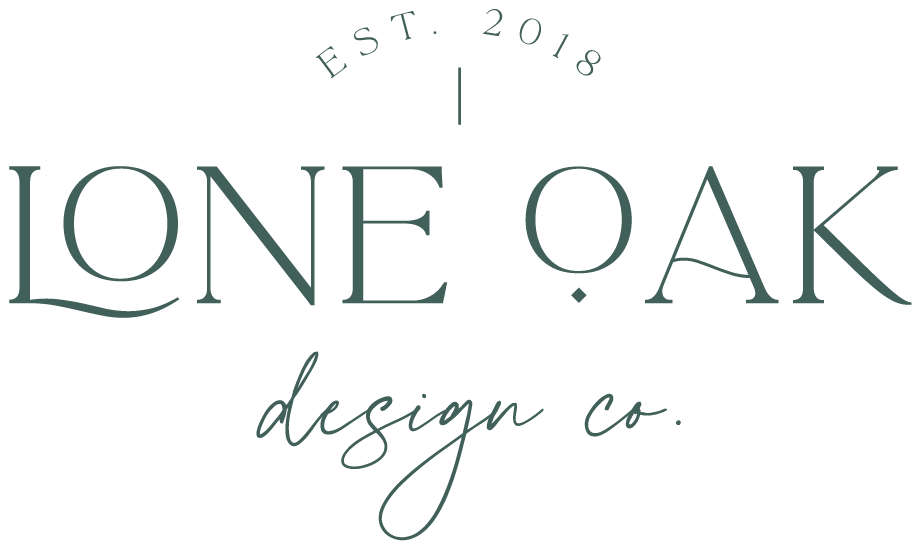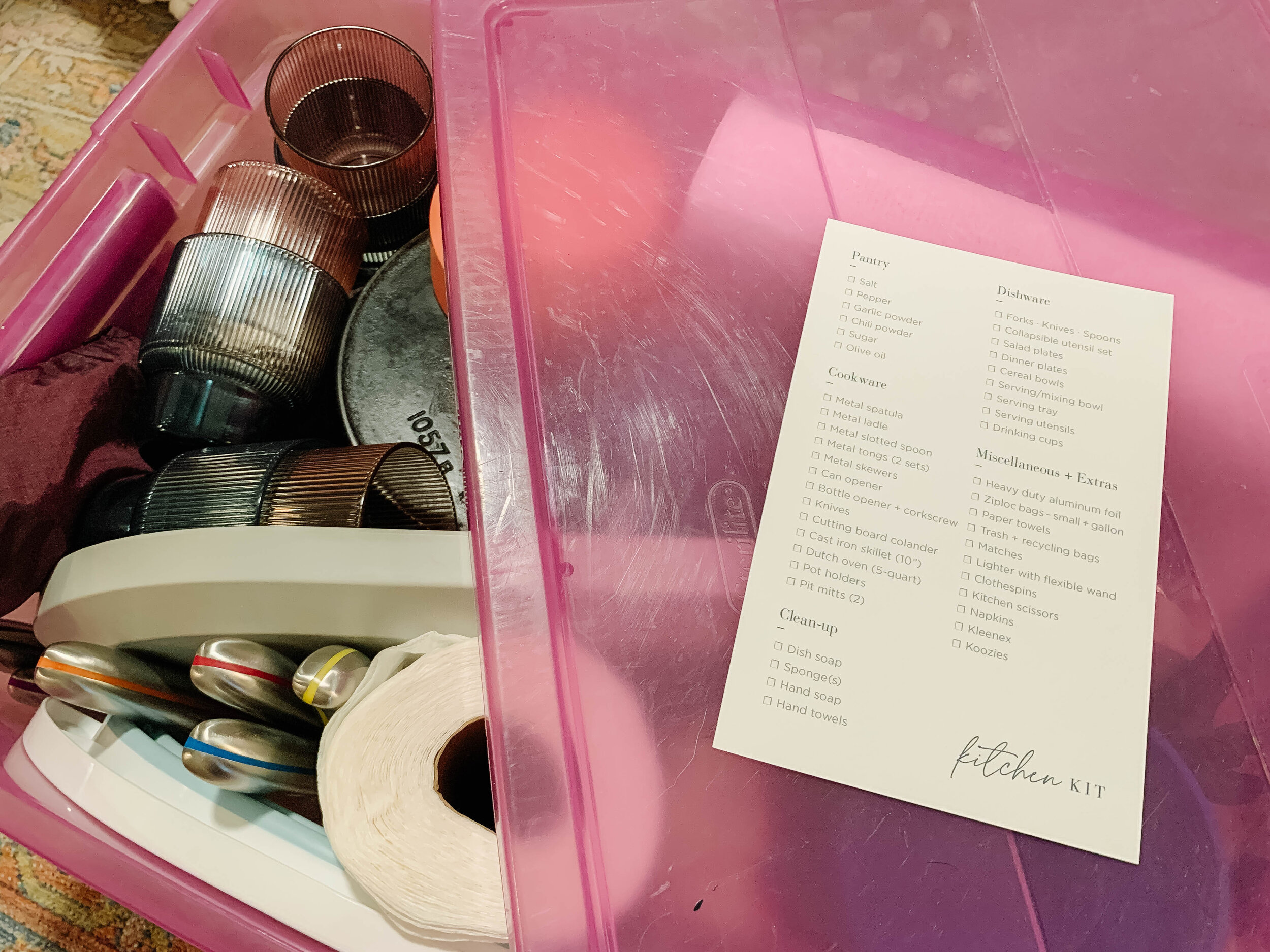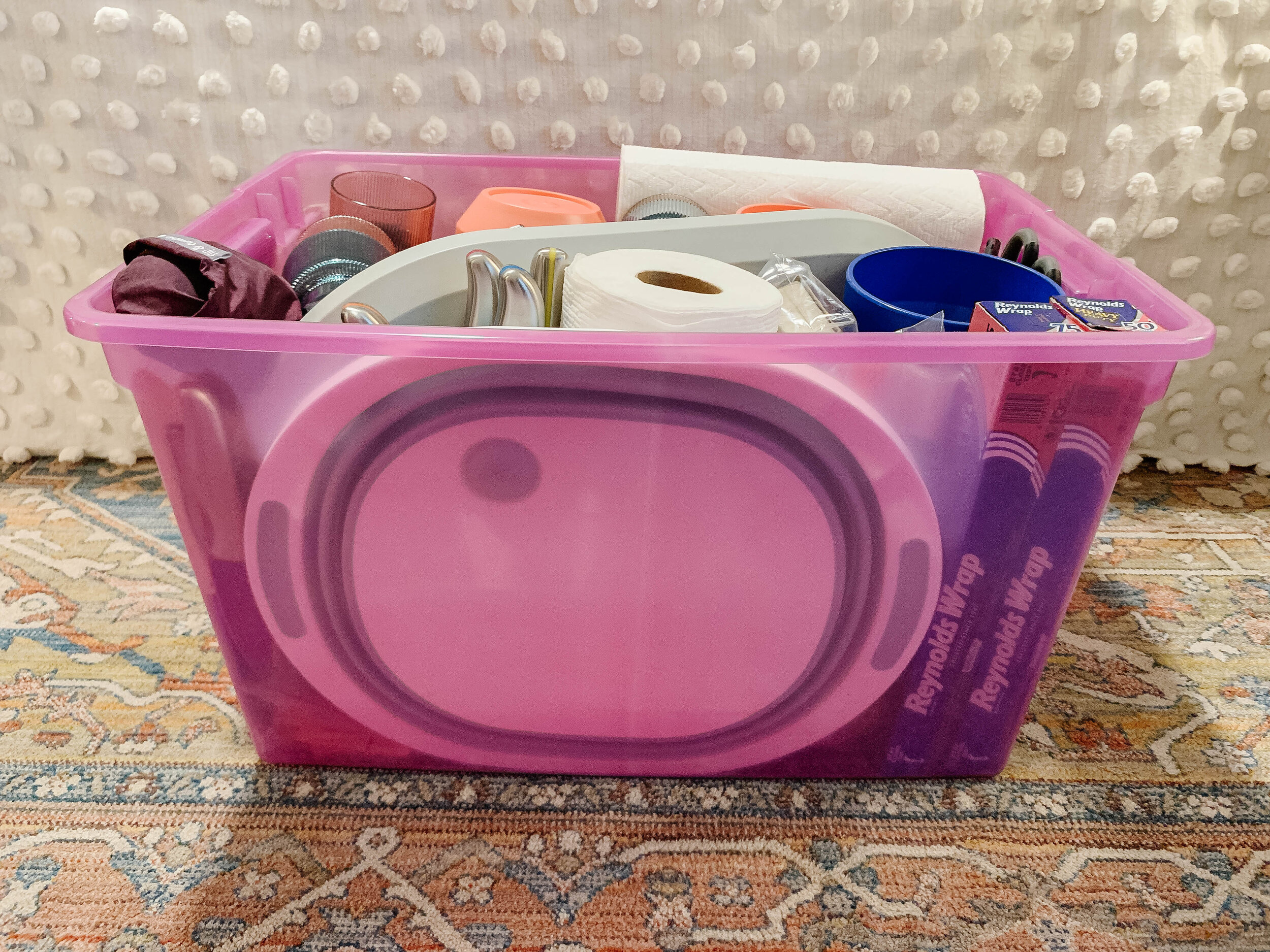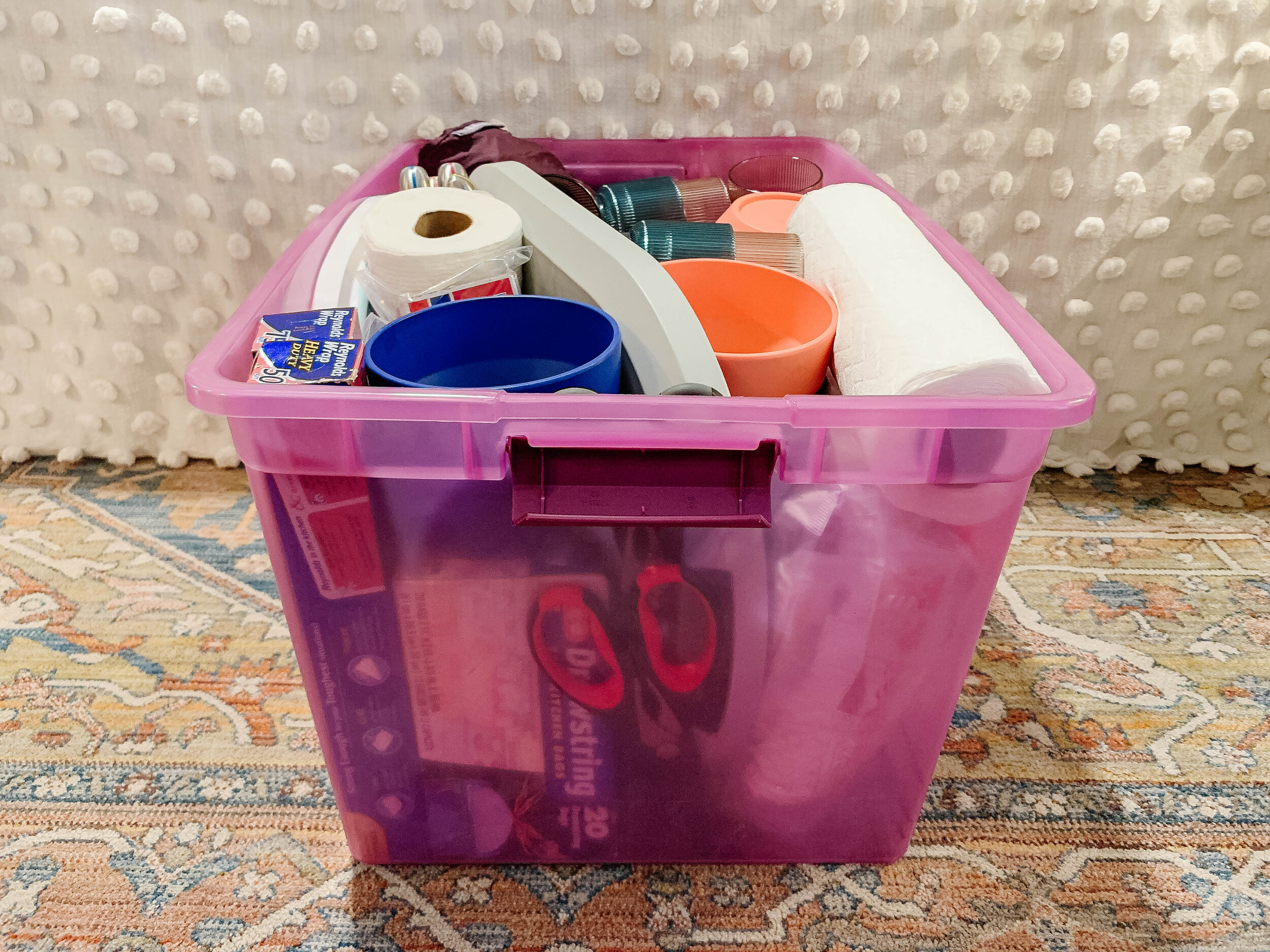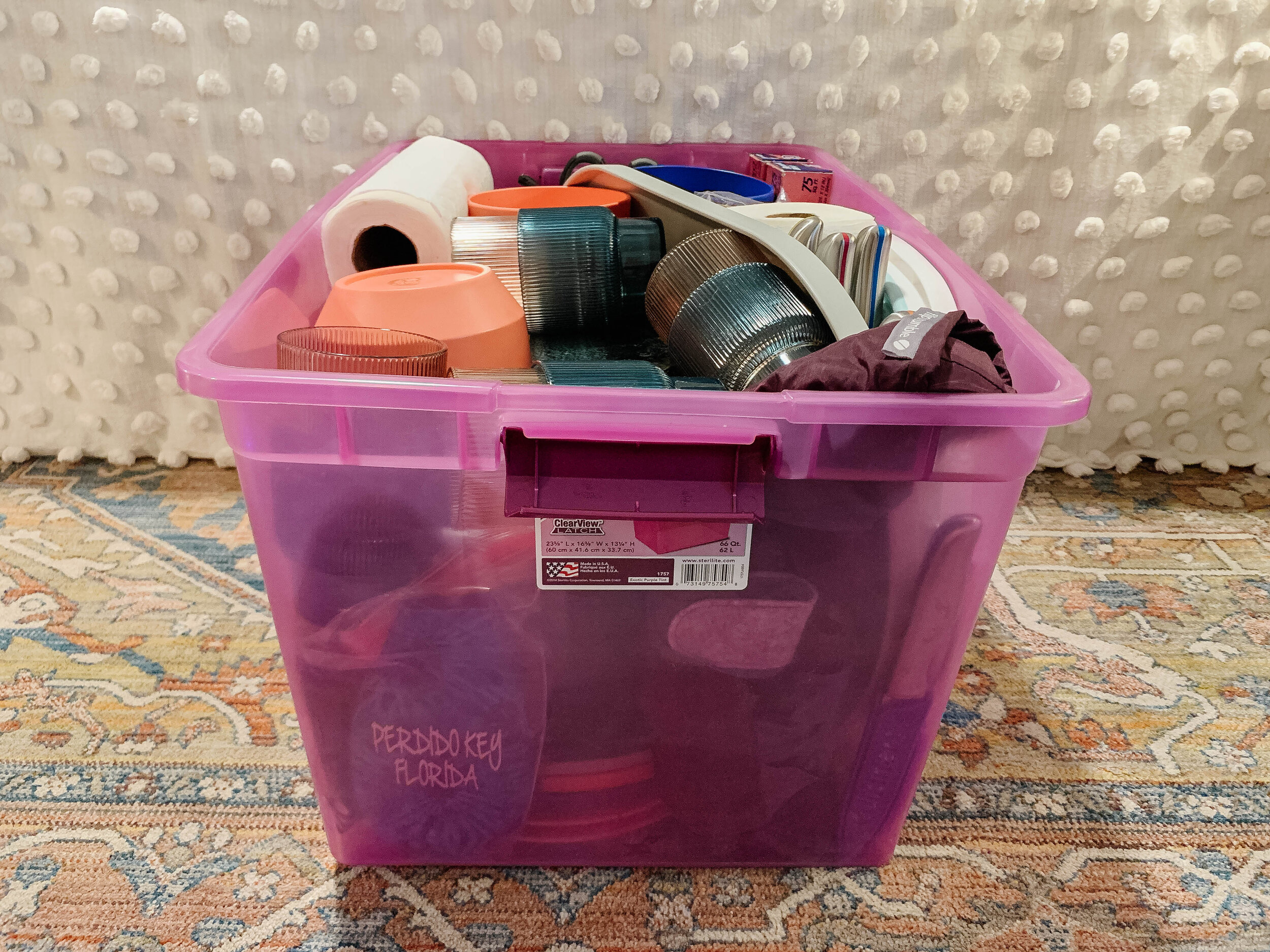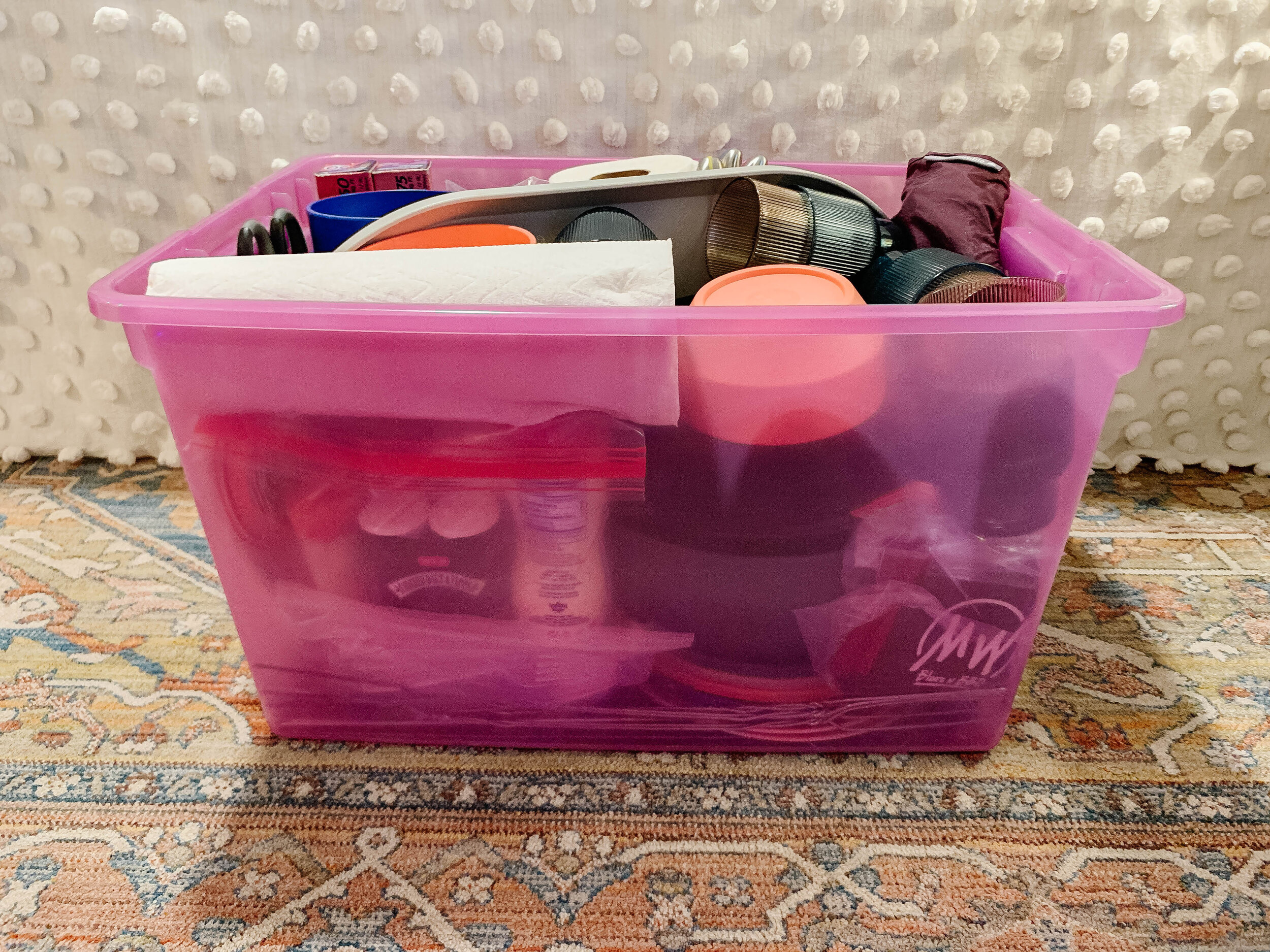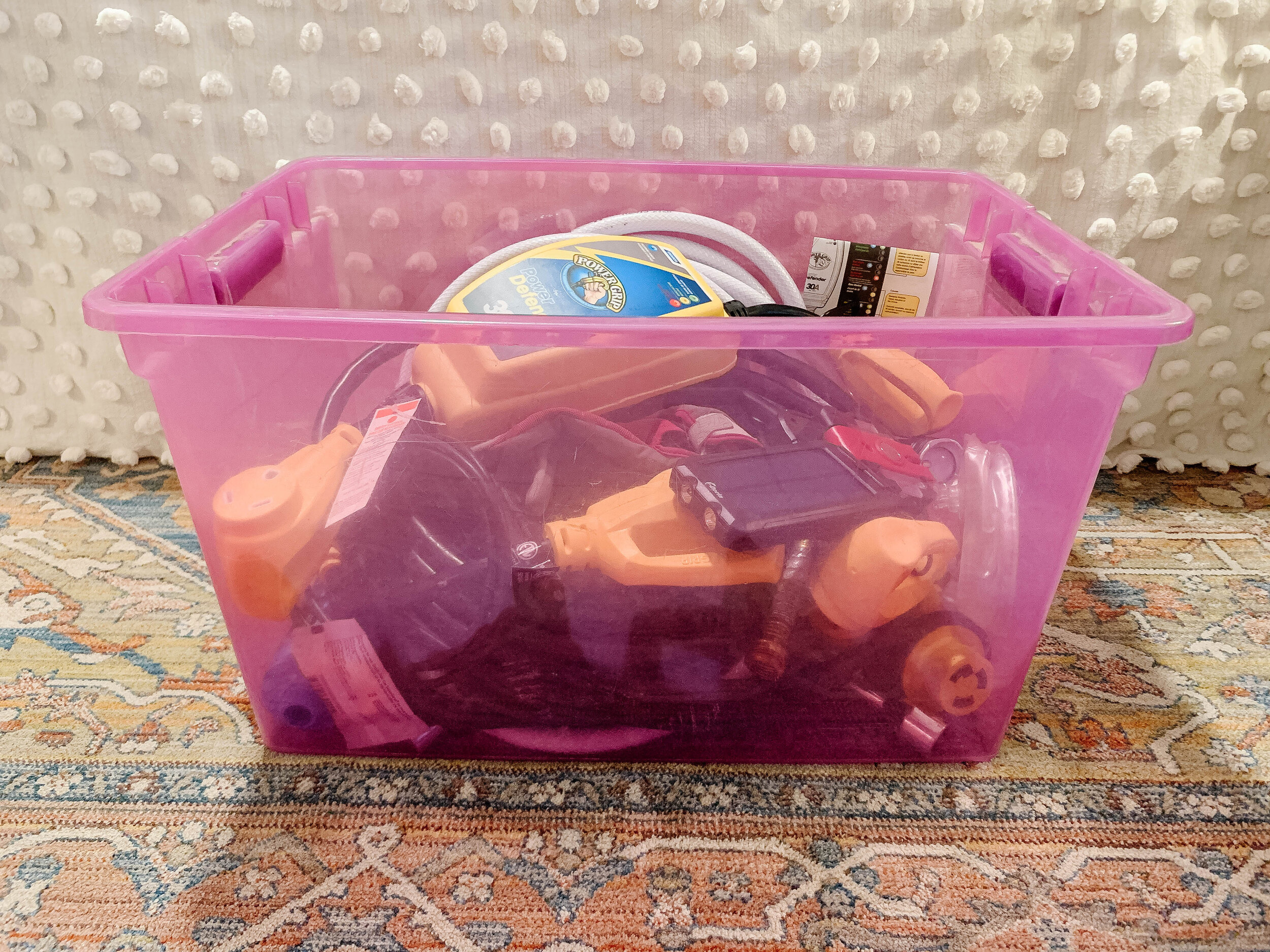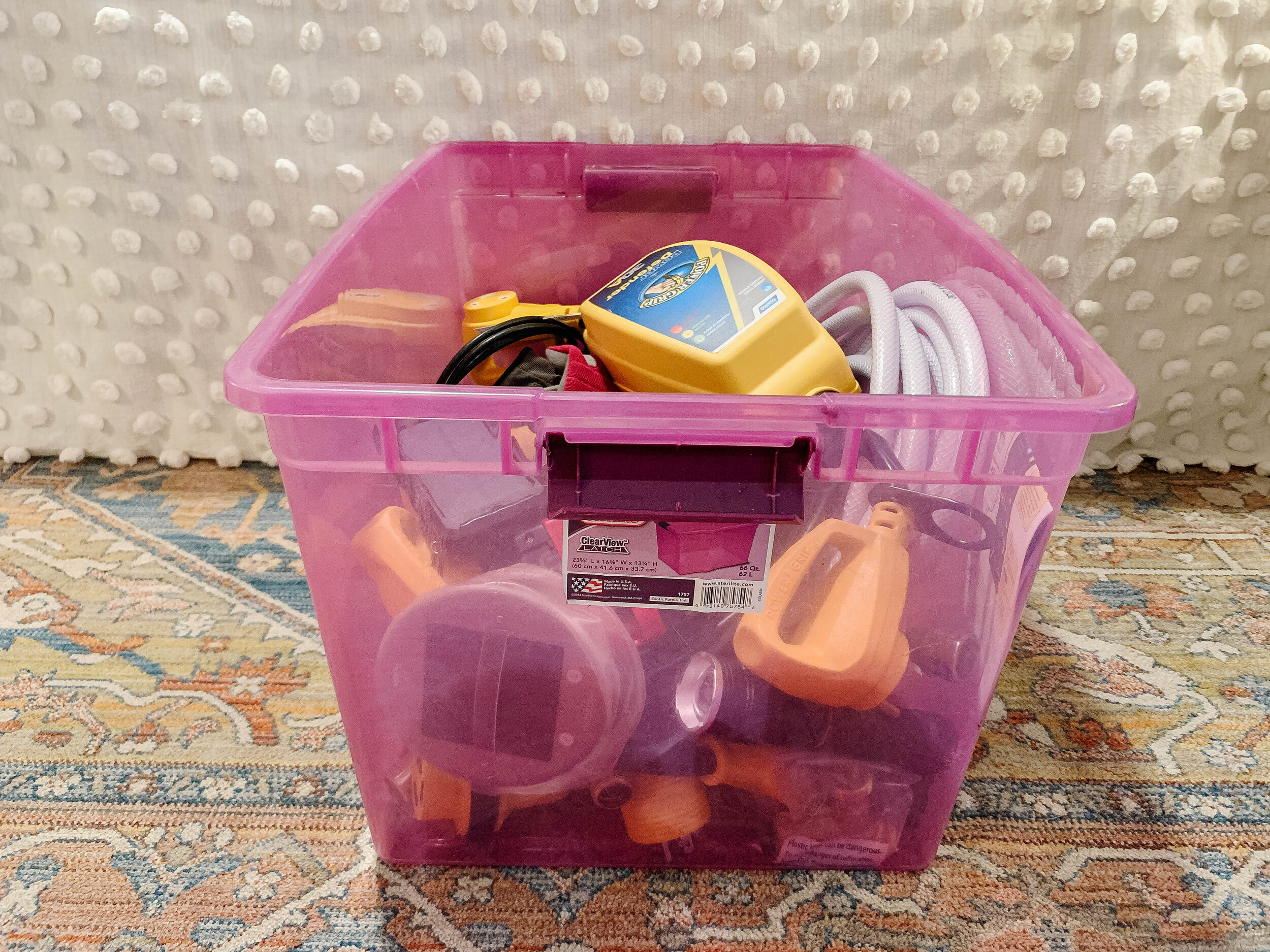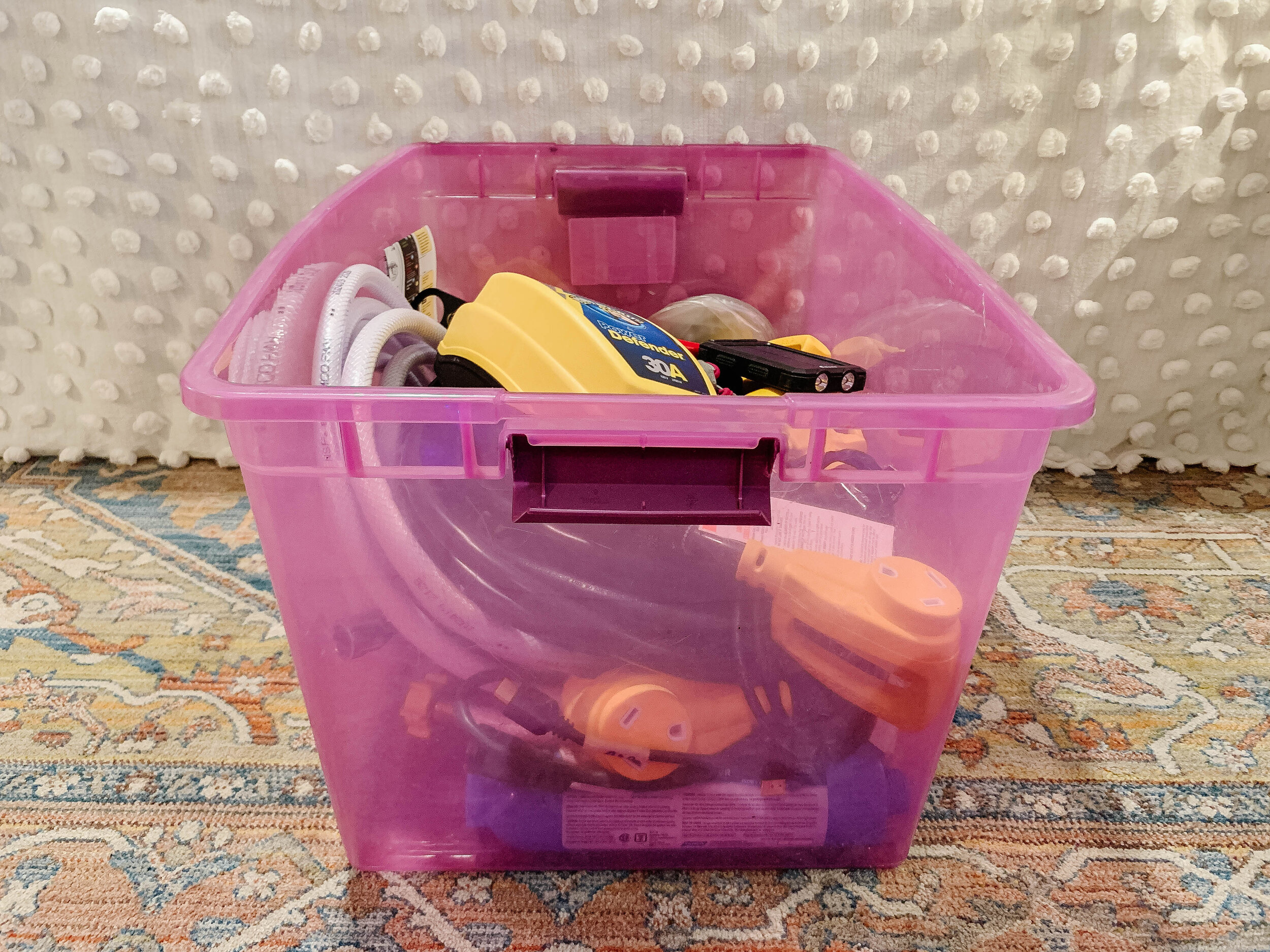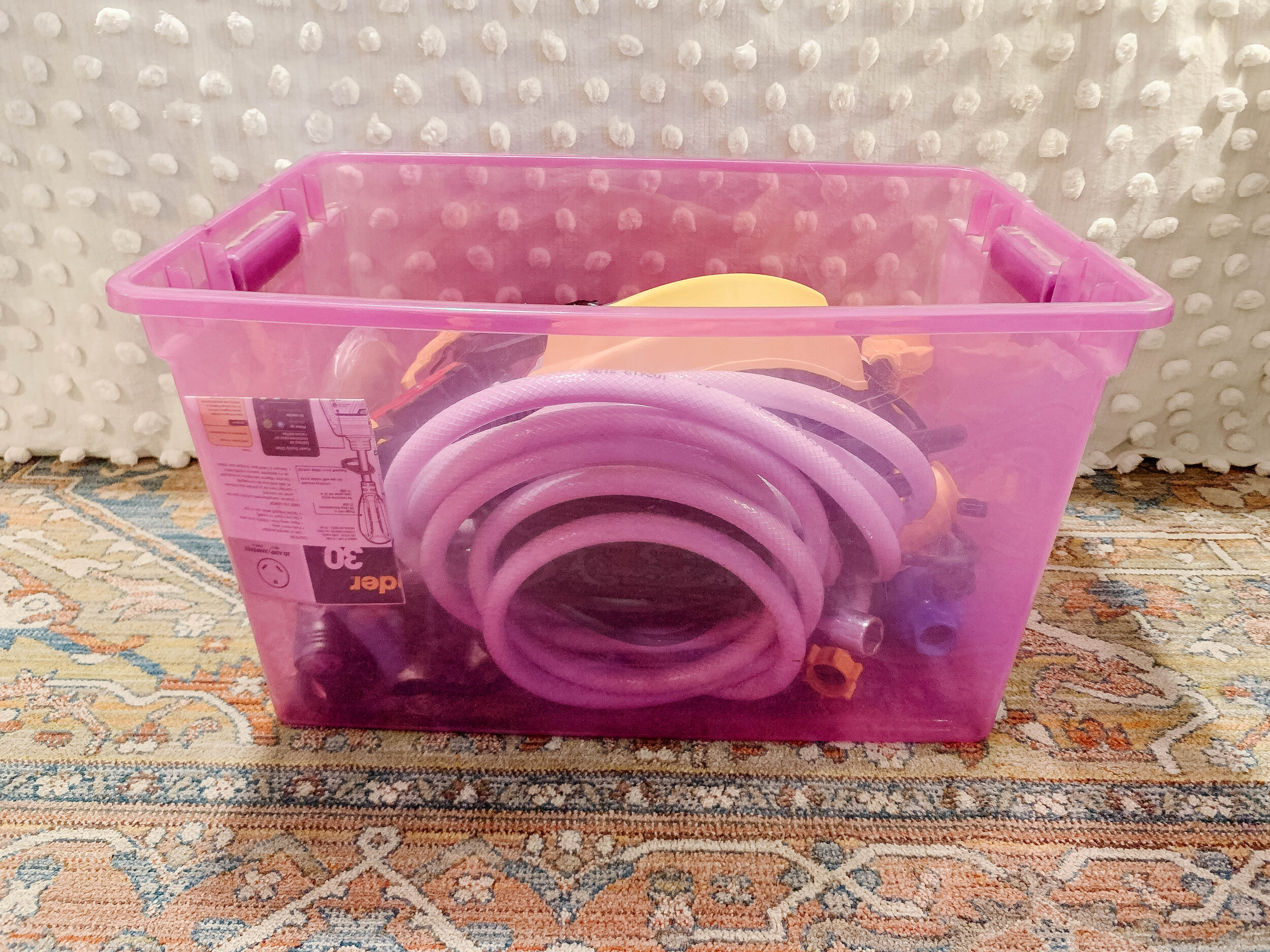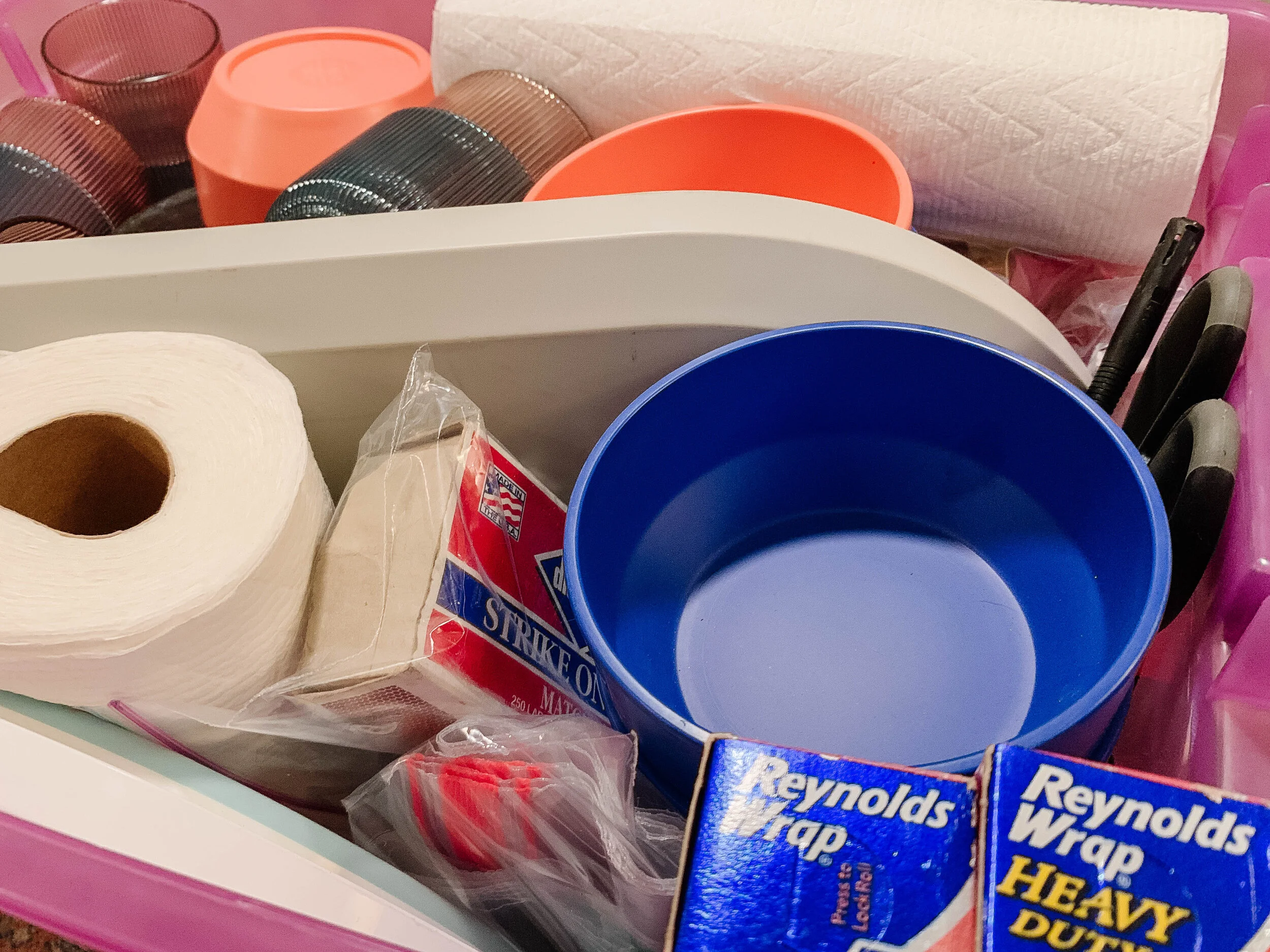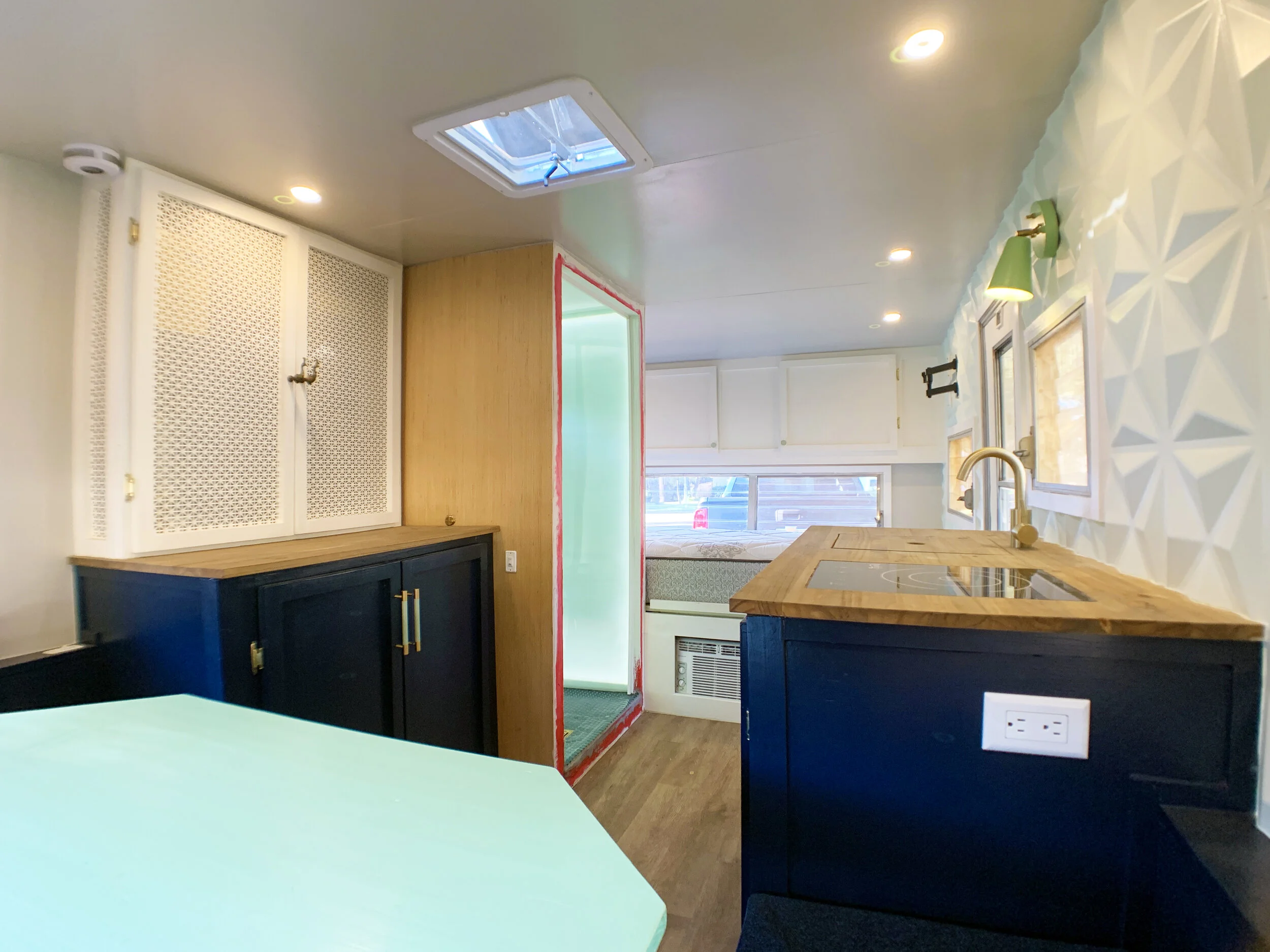Keeping Organized with Camping Kits
Hey y’all – It’s crazy to think after more than two years of hard work rebuilding our 1969 travel trailer we’re finally here, but we’re pleased to say we’ve actually been taking The Cameo out on vacations!
Wild, I know.
While we definitely will continue to share our vintage camper renovation in detail, we also have made a new space on the blog for living the vacation camper life after the renovation. Y’know, the stuff showing you how we make the space work for us when we go on trips to make the best of our vacation, the things that maybe we’ve modified along the way, the hacks that we use to make actually using the camper more enjoyable, etc.
Today we’re sharing how we keep organized on the road with what I’ve been calling our “camping kits”. In brief, it’s an easy way we pre-pack for our trips by function, so that we always know we have the essentials packed and ready to go at the start of every trip without even thinking about it.
The great news is this is an excellent camping hack anyone can use whether you’re camper/RV/trailer camping or not!
It’s something we’ve always had for tent camping before camper life (then, just a one-size-fits all / everything-in-one-tub kit) that has now grown (slightly) and easily transitioned into our life with a camper.
How it works
When we come back from a trip, each kit comes out and doesn’t get put back in the camper until everything on the list inside is accounted for and put back in its place. That way it’s always ready and waiting in the camper for your next trip.
Your camping kit can have whatever you need in it, but we try to keep ours paired down to camper-specific essentials that we pack every time we go out. Some of it is camper-only stuff (like a 30 Amp power cord) and some of it is stuff we use at the house and is easier to also have in a travel-size version that’s only for the camper (like a reasonable, non-industrial-size shaker of salt … unlike the one that’s typically in our home pantry).
We have our kits broken out into three main categories:
The kitchen – where the food stuff goes.
Utilities – the things we need to run water and electrical to our camper, plus some other things.
Waste – y’know, all the stuff you need to seamlessly hook up and drain your black and gray water tanks at the end of the trip without feeling gross on the ride home.
For each kit you’ll need
A large storage tub (any should do as long as it fits in your camper’s storage area). In our case, under the twin bed. We like the kind with the latching tops for a little extra security.
Ours are 66 Qt./62 L tubs like this one (outside dimensions: 23-5/8" x 16-3/8" x 13-1/4" and interior dimensions at bottom: 19-7/8" x 13-3/8" x 12-7/8") and we generally like to use clear or semi-clear tubs for our kits, except…
Our 18 gallon waste kit tub (23-7/8" L x 15-7/8" W x 16-3/8" H) is solid. Partly because we had two clear and one solid tub already lying around, but also because no one needs to see that and it also helps clearly and quickly show which one is that kit.
A complete list of what’s in the tub taped to the tub for protection + easy finding – (we’ve included our lists for you to download, print and use at the end of the post!)
We like to tape our lists to the inside of the clear lids so they’re visible from the outside, but protected.
We tape our waste tub list to the outside of the top of the lid to keep it clean and readable from the outside.
The kitchen kit
Where the food stuff goes.
What’s in our kit:
To fit it all, Tetris the pieces together like a puzzle and think of storing things inside of other things kind of like a Russian nesting doll to help you maximize your storage capacity. We like to sub-organize a lot of the like-items into large Ziploc bags to help keep things better organized in the tub.
Pantry basics – not enough to win culinary awards or anything, but enough staples that anything is edible if you forget everything else.
Spices – salt, pepper, garlic powder, chili powder, sugar
Olive oil
Things to make food
Metal cooking utensils (so they can’t accidentally melt!) – spatula, ladle, slotted spoon, tongs (2), skewers, can opener, bottle opener + corkscrew
Small set of knives (with safety covers!) – we have a set of 6 that are color-coded
Cutting board – ours doubles as a bowl and colander which is a nice space-saver
Cast iron skillet (ours is a 10” grandma heirloom)
5 quart cast iron dutch oven – works in just about every scenario
Pot holders
Pit mitts – the best invention ever. We have (and recommend) two, or one for each hand.
Clean up
Dish soap + sponges – we like to keep these in a large Ziploc bag in case the soap leaks inside the tub
Hand soap
Hand towels
Things to eat with – (this is a great place to use up all those individually-wrapped takeout utensils!)
Eating utensils – forks + knives + spoons
Small salad plates, large dinner plates, small cereal bowls – we have four of each
Serving tray – something we never thought we’d need but use every trip to bring food from the campfire to the table
Serving utensils – these can also be your tongs, slotted spoons, etc. mentioned earlier
Drinking cups – we have four “highball” + four “double old fashioned”
The “extras” you definitely need – the stuff that can help you MacGyver just about any scenario
Heavy duty aluminum foil
Small + gallon Ziploc bags
Paper towels
Trash/recycling bags
Matches + multipurpose lighter with flexible wand
Clothespins
Napkins
Travel Kleenex
Koozies – The collapsible kind you probably get for promotional things are great for this
You can see in the top view our kitchen kit is like beautifully organized chaos.
The utilities kit
The things we need to run water and electrical to our camper, plus some other things.
What’s in our kit:
In addition to the following, we also recommend an emergency roadside kit + extra roadside warning triangles, which we store in our exterior-accessible trunk area next to our spare tire.
Water stuff
Fresh water hose kit – ours contains a water hose, filter, pressure regulator + hose protector/extender
Hose splitter – so we can run water to the camper and use an extra spigot outside at the port if needed without disconnecting from the camper
Electrical stuff
30 Amp RV voltage + surge protector/monitor – to help protect the camper from irregular power surges that might be coming from the shore power pedestal
50 Amp male to 30 Amp female adapter dog bone – in case a shore power pedestal doesn’t have a 30 Amp outlet and we need to convert
Other stuff
Tire iron that matches the camper tires
Solar-powered items – inflatable lantern, charger/light
Flashlights (3) – two sliding handheld and one magnetic
Work gloves (a pair for each of us) – because you never know
Another top view, this time of our utilities kit. It really is a lot more organized than it looks, with the cords and cables neatly coiled.
The waste kit
All the stuff you need to seamlessly hook up and drain your black and gray water tanks at the end of the trip without feeling gross on the ride home.
What’s in our kit:
Hose adapter – that came with our hose* kit; the hose part of the kit is stored in our bumper
Sidewinder – holds the flexible hose at a graduated angle to let gravity do its thing
Disposable gloves – trust us, you need these
Thick rubber mat – to keep you up off the ground in case it’s already, ahem, wet when you get there and you need to kneel or lay down/get under the camper
Hand sanitizer
*Hose – not technically in the “waste kit” since the hose is stored in our bumper, but very necessary for the waste part of the camping journey
This kit is the lightest weight and has the fewest things, but it definitely is packed full of helpful stuff.
With our camping kits pre-packed, we just need to pack our food, drinks and clothes and we’re off on our next trip!
>> Download our camping kit checklists <<
Each downloadable checklist includes what we put in our kits, plus some empty lines for you to add on extras.
Kitchen Kit Checklist | Utilities Kit Checklist | Waste Kit Checklist
What else would you add to your camping kit? Do you have any tricks you use that make camper/ing life easier? We’d love for you to share with us in the comments below!
